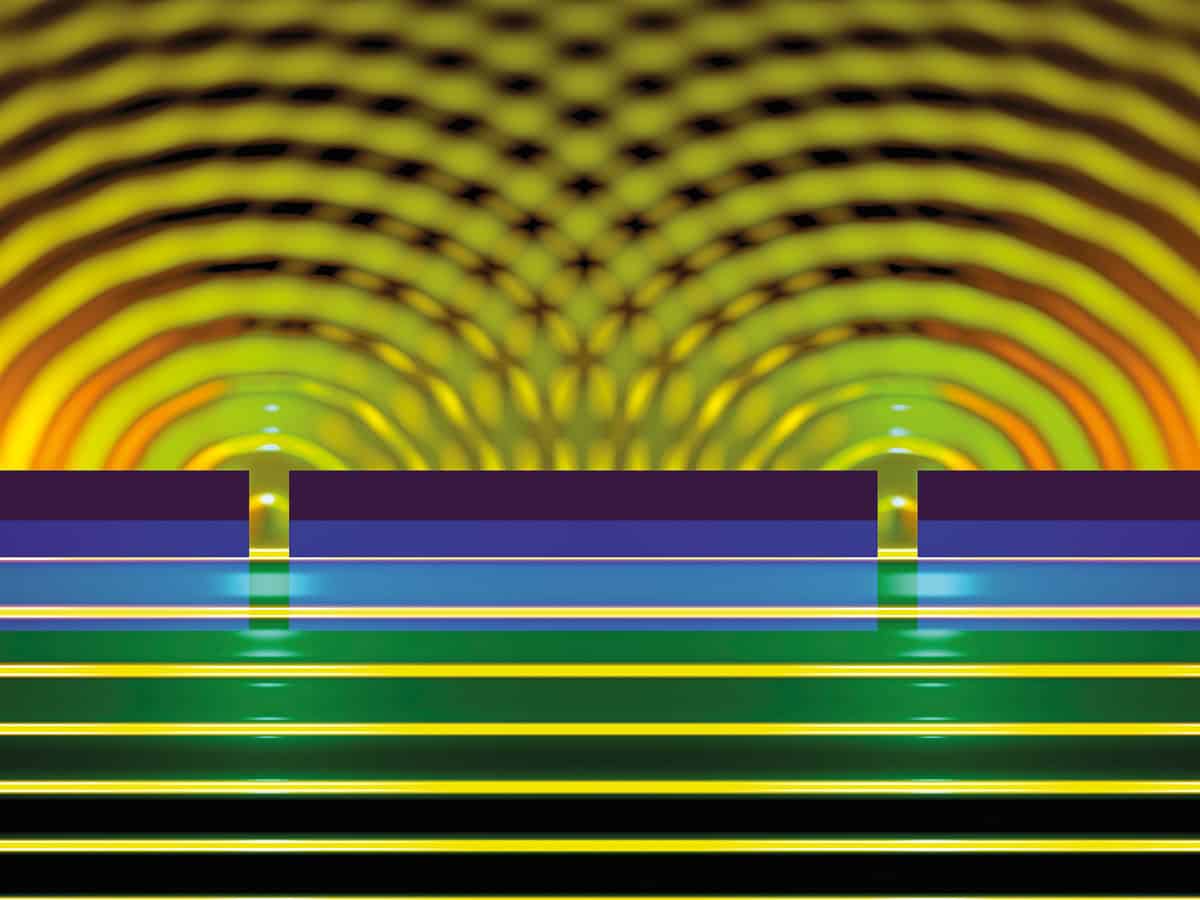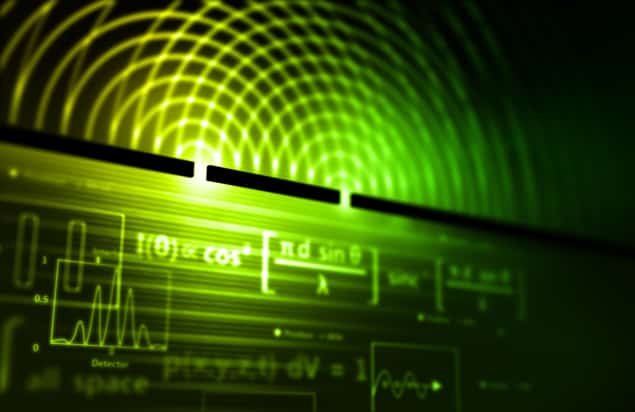Wave-particle duality quantified for the first time
01 Sep 2021
One of the most counterintuitive concepts in physics – the idea that quantum objects are complementary, behaving like waves in some situations and like particles in others – just got a new and more quantitative foundation. In a twist on the classic double-slit experiment, scientists at Korea’s Institute for Basic Sciences (IBS) used precisely controlled photon sources to measure a photon’s degree of wave-ness and particle-ness. Their results, published in Science Advances, show that the properties of the photon’s source influence its wave and particle character – a discovery that complicates and challenges the common understanding of complementarity.
The double-slit experiment is the archetypal example of complementarity at work. When a single photon encounters a barrier with two thin openings, it produces an interference pattern on a screen placed behind the openings – but only if the photon’s path is not observed. This interference pattern identifies the photon as a wave since a particle would create only one point of light on the screen. However, if detectors are placed at the openings to determine which slit the photon went through, the interference pattern disappears, and the photon behaves like a particle. The principle of complementarity states that both experimental outcomes are needed to fully understand the photon’s quantum nature.
Signal and idler
The new study adds to this principle by showing that the properties of the slits also matter. In their experiment, the IBS researchers shone so-called “seed beams” of laser light onto two crystals of lithium niobate. Each crystal produces two photons when illuminated: a “signal” photon and an “idler” photon. The researchers sent the signal photon into an interferometer to create interference patterns and quantify the photon’s wave nature, while observing the path of the idler photon to pinpoint its particle character. Because the signal and idler photons are produced together, they form a single quantum state described by both the wave and the particle property measurements. Waves and particles The experimental set-up. (Courtesy: Institute for Basic Science)
Waves and particles The experimental set-up. (Courtesy: Institute for Basic Science)
 Waves and particles The experimental set-up. (Courtesy: Institute for Basic Science)
Waves and particles The experimental set-up. (Courtesy: Institute for Basic Science)By changing the intensity of the seed beams in each crystal, the researchers independently altered the crystals’ chances of emitting photons – a process akin to controlling a photon’s “attraction” to each slit in the classic experiment. When one of the crystals was very likely to emit photons, the pattern the interferometer produced was barely visible, implying that the photon was mostly particle-like. When the crystals’ emission probabilities were equal, the interference pattern was sharp, highlighting the photon’s wave character. “The wave nature of the photon could be extracted as a visibility of the interference pattern,” explains Tai Hyun Yoon, a physicist at IBS and a co-author of the study.
Corroborating theoretical results
In their experiments, Yoon and co-author Minhaeng Cho focused on regimes where the photon was acting partly as a wave and partly as a particle. Previous theoretical studies indicated that the amount of wave-ness and particle-ness in such a system should satisfy a simple equation involving source purity – that is, the likelihood that a particular crystal source will be the one that emits light. The new study is the first complementarity experiment to account for and precisely control this source purity, and it corroborates a prediction made by Xiaofeng Qian and colleagues that source purity µs, interference pattern visibility V and path distinguishability P are related through the expression P2 + V2 = μs2.
“Having this experimental capability makes it possible to confirm the theoretical structures that we were discussing, to test how the source is controlling a single quantum particle’s wave-particle duality,” says Qian, a physicist at Stevens Institute of Technology in New Jersey, US who was not involved in the present study. “This was a great achievement, that they could produce a single photon state where all the parameters were at their control,” agrees Girish Agrawal, a physicist at Texas A&M University, US and Qian’s collaborator on this earlier theoretical work.READ MORE

The new study also showed that controlling and quantitatively measuring the photon’s wave and particle character can be recast as measuring the entanglement between idler photons and the detectors that identified their path. In this way, researchers connected complementarity to a property of photons that is commonly exploited in practical quantum devices. “This extra controllability [in our setup] could be an interesting and useful way to quantum engineer states that might be of interest in quantum information,” says Cho.
Besides its possible applied value, the researchers say that their study challenges physicists’ traditional thinking about complementarity. “In the context of pure theory and fundamental experiments, this experiment does add something new,” agrees Peter Milonni, a physicist at the University of Rochester, US who was not involved with the present work. Qian adds that the experiment quantitatively proves that instead of a photon behaving as a particle or a wave only, the characteristics of the source that produces it – like the slits in the classic experiment – influence how much of each character it has. “This experimental test and the theoretical quantitative analysis really deliver the message that a quantum particle can behave simultaneously, but partially, as both,” he concludes.
from physicsworld.com 3/9/2021

Δεν υπάρχουν σχόλια:
Δημοσίευση σχολίου